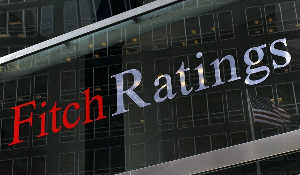Singapore is small, hot and heavily populated -- the 5.5 million residents of the tropical city-state live in less than 750 square kilometres of land. And population is expected to reach 6.9 million by 2030.
Despite these challenges, Singapore continues to be amongst the most liveable and economically successful cities in the word, with a GDP equaling that of leading European countries.
With more than 50% of the world's population living in cities already (a figure projected to reach 70% by 2050), Singapore -- where everyone is a city dweller -- is setting trends for rapidly urbanizing countries worldwide.
But how have they done it?
1) Have a plan
Concept plans have been in place since 1971, with long-term visions and predictions for the design of Singapore's infrastructure. Such long-term planning was crucial as the population was growing much faster than originally anticipated.
"The top priorities for Singapore as a newly independent state were to provide housing for its people and to create jobs," says Khoo Teng Chye, Executive Director of the Centre for Liveable Cities, Singapore.
With limited land and no natural resources, there was always a focus on greenery, the environment and intensive development of utilities and infrastructure including power plants, deep-underground sewerage and refuse incineration. "Planning for clean air, clean water and green cover was integral to Singapore's city planning," says Khoo.
Decentralization of commercial hubs was also key in the country's urban design to reduce congestion and commuting time -- improving liveability.
"High density does not necessarily mean low liveability," says Khoo.
2) Don't waste your waste
With high-density living comes high-density waste.
But Singapore has been organized with its refuse management systems, not only by collecting it efficiently but even employing it to make more land.
"They don't have the space to store waste," says Dirk Hebel, from the Future Cities Laboratory at the Singapore-ETH Centre for Global Environmental Sustainability.
Waste is managed instead through regular incineration and the resulting ashes are combined with marine sand to extend Singapore's land mass.
"They use ashes for landfill to extend the territory," says Hebel.
In addition, the country has set a precedent for water resources through its desalination plants and NEWater plants, where sewage is filtered to recycle it into drinking water.
But Hebel's group are now working on new avenues for using waste -- this time to construct buildings instead of land.
"In Singapore you have almost 80% high-value resource waste," says Hebel. This category of waste includes plastics and glass, which could be re-purposed for building materials.
Hebel's team recently exhibited the possibilities of waste recycling during the 2015 New York City Ideas Festival.
They built an arched canopy pavilion comprised of waterproof panels made from discarded beverage containers. The canopy was anchored to a base composed of stacked, wooden pallets.
Hebel sees future possibilities in Singapore: "There are things surrounding us that can be used in a secondary life as a building structure," he says.
3) See green with A/C
Due to its close proximity to the equator, Singapore's climate is hot and humid, with temperatures averaging above 30 degrees Celsius and little variation throughout the year.
The built-up nature of the city increases temperatures further through the 'heat island' effect -- caused by buildings blocking air flow, transport emissions and long-wave radiation heating up the island nation.
As a result, a lot of the city's energy expenditure goes towards cooling people down.
"Up to 60% of Singapore's electricity is for buildings," says Arno Schlüter, Professor of Architecture and building systems, also with the Future Cities Laboratory. Most buildings use electricity to cool-down and dehumidify public and work spaces. "Singapore is a noisy city due to all the [cooling] units on the wall," says Schlüter.
To overcome this overconsumption of energy, Schlüter's team are now piloting a project with the United World College of South East Asia in which they are dehumidifying the air external to a building and flowing the resulting cool air over the façade of a building.
According to FCL, "the technology consists of passive chilled beams, distributed ventilation units combined with an underfloor air distribution network and new control systems," and removed the need for air conditioning systems. "It means we can save a lot of space -- up to 1/3 of a building," says Schlüter.
Designs for new buildings in Singapore now also regularly incorporate design for natural ventilation by capturing and promoting wind flow through a public space.
4) Go underground
When population increases and demand for land spikes accordingly, the tendency is to build upwards -- as is the case for most cities worldwide.
But with unique -- and more pressing -- land restrictions compared to the rest of the world, Singapore has now begun to build downwards and is taking workplaces underground.
And they're going deep underground -- first with ammunition facilities, then the Jurong rock caverns storing oil in caverns deep below the ground and soon other industries, such as science laboratories.
"[It's a] new way of using underground space on a larger scale," says Jian Zhao, Professor of Geomechanics at Monash University, Australia. Zhao was previously at Nanyang technical university in Singapore where he developed the first research proposals exploring the options to go underground.
The design involves digging caverns into rocks more than 100 meters below the ground.
"Underground, everything is much more stable," says Zhao referring to factors such as vibrations, temperature and humidity which are important for facilities such as power plants, water reservoirs and industrial settings in general. "The idea is to make the city more liveable by putting everything undesirable underground," he says.
5) Embrace technology
The technological development of Singapore cannot be forgotten as this aspect of city living has long been incorporated into the design of the city-state.
The Singapore mass rapid transit (MRT) is considered among the best public transport systems in the world -- needed due to restrictions on vehicle ownership -- and intelligent buildings have been in use for more than a decade aiding movement and entertainment through public and work spaces.
But increasing density is putting more pressure on the country's infrastructure. "Singapore needs to adapt and innovate," says Khoo, in order to meet needs for residence, recreation and lifestyle.
Innovation has been at the root of the country's development -- both for liveability and sustainability.
"Technology is a key feature of green buildings," says Yvonne Soh, General Manager of the Singapore Green Buildings Council. "[It can] respond to the environment quickly and to people," she says.
Responding to movements and uses of space in real-time can cut energy requirements dramatically. This emphasis on technology has helped Singapore become one of the Greenest cities in the world.
...and share your knowledge
Singapore is now exporting its expertise in urban planning to other cities in Asia where rapid urbanization is taking place -- including the Tianjin Eco-city, China and the new capital city in Andhra Pradesh, India -- and paving the way for cities worldwide to ensure they build sustainably and improve their livability.
"Through greater collaboration among cities, mass urbanization -- the result of a rapidly growing global urban population -- will ultimately benefit the human race," says Khoo.
Opinions of Tuesday, 20 October 2015
Columnist: CNN



















